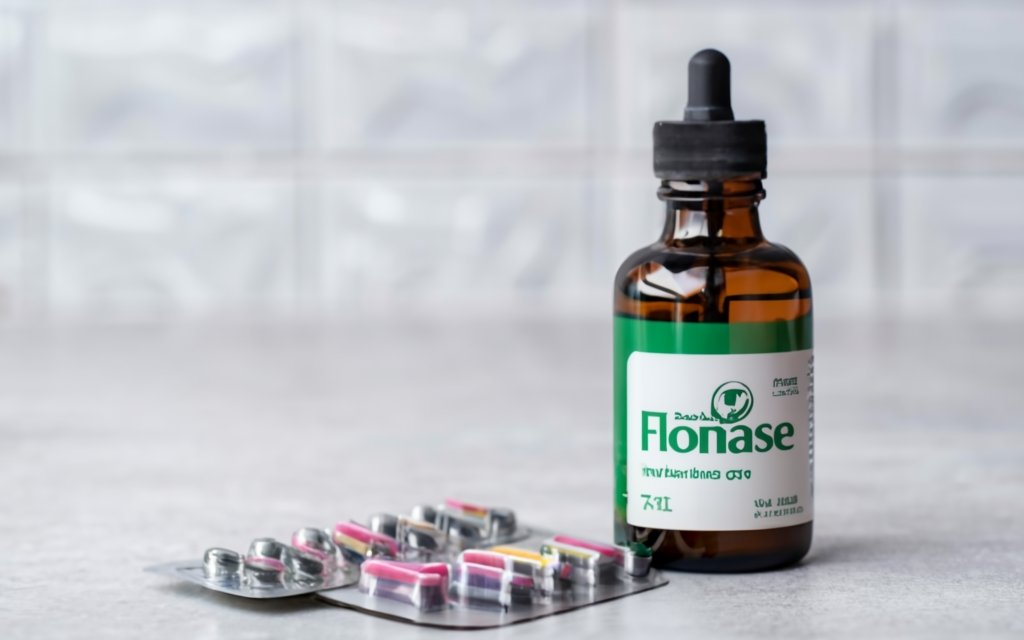The Dangers of Ignoring Nifedipine Side Effects
When Julie first started taking nifedipine for her high blood pressure, she didn’t think much about potential side effects. Her doctor said it was generally well-tolerated. But within a few weeks, Julie noticed that her ankles were often swollen, she felt lightheaded when standing up, and she was strangely fatigued all the time.
Julie isn’t alone. Up to 30% of patients taking nifedipine experience side effects that impact their quality of life. But by understanding these side effects and how to manage them, you can continue benefiting from nifedipine while maintaining a healthier, happier life.
What is Nifedipine and How Does It Work?
Nifedipine belongs to a class of medications called calcium channel blockers. It works by relaxing and widening the blood vessels, allowing blood to flow more easily and lowering blood pressure. This also increases oxygen and blood flow to the heart.
Nifedipine is often prescribed for:
- High blood pressure
- Chronic stable angina (chest pain)
- Raynaud’s phenomenon
- Premature labor
It comes in regular, extended-release, and long-acting tablets. Extended-release versions release small amounts of the drug over time to keep levels steady.
Understanding Common Nifedipine Side Effects
While nifedipine helps many patients, up to 30% experience side effects like:
Flushing
Reddening of the face and neck, often brought on by spicy foods, alcohol, exercise, hot showers and more. For some, just bending over is enough to trigger flushing.
Peripheral Edema
Swelling in the ankles, feet, legs, hands or arms due to fluid retention. Edema ranges from mild puffiness to significant swelling.
Dizziness
Feeling faint, lightheaded or unsteady on your feet. This may occur when going from sitting to standing.
Headaches
Pain or discomfort in the head ranging from mild to severe migraine.
Nausea
Queasiness and urge to vomit. In some cases, nausea leads to vomiting.
Constipation
Difficult, infrequent or painful bowel movements. Stools may be hard and dry.
Leg Cramps & Muscle Aches
Sudden, involuntary muscle contractions causing a cramping pain. Often occurs at night or with over-exertion.
Sexual Problems
In men, difficulty getting or maintaining an erection (erectile dysfunction). In women, decreased sexual arousal or discomfort during intercourse.
Less Common But Serious Side Effects
Some people taking nifedipine experience more serious side effects like:
- Swelling of the ankles/feet
- Shortness of breath
- Unusual weakness/tiredness
- Fast, slow or irregular heartbeat
- Fainting
- Mental/mood changes
- Jaundice
- Difficulty breathing
If you experience any serious side effects, call your doctor right away or go to the nearest emergency room. Stopping nifedipine without medical supervision could make chest pain and other symptoms worse.
Tips to Manage Common Nifedipine Side Effects
While up to 30% of patients deal with nifedipine side effects, there are things you can do to keep them under control:
Lifestyle Changes
Stay hydrated – Drink plenty of water, which helps minimize fluid retention and constipation.
Increase fitness – Regular exercise helps manage blood pressure and improves stamina. But check with your doctor first.
Elevate legs – Prop up your feet and legs periodically if you have edema. This improves fluid drainage.
Take it slow – Get up slowly from sitting or lying to prevent dizziness. Sit on the edge of the bed before standing.
Plan ahead – Allow enough time for bathroom breaks since constipation is common.
Avoid triggers – Red wine, dark beer, aged cheese and processed meats can trigger headaches. Track your diet.
Use compression stockings – Gradient compression stockings improve blood flow and minimize swelling.
Dietary Adjustments
Cut sodium – Limit salty foods like chips, frozen meals, pizza and canned soups to avoid fluid retention.
Up potassium – Eat potassium-rich foods like bananas, potatoes, spinach and yogurt to balance sodium.
Stay regular – Increase fiber with fruits, vegetables, beans, lentils and whole grains to prevent constipation. Prunes and psyllium supplements also help.
Drink caffeine – Some find coffee alleviates headaches, but caffeine also has diuretic effects to note.
Minimize alcohol – Alcohol worsens flushing and headaches. It also interacts with many blood pressure medications.
Alternative Treatments
Acupuncture – Shows promise for alleviating headaches and improving sexual function.
Biofeedback – Uses breathing and mental techniques to expand blood vessels and improve ED.
Massage – Helps relax muscles and improve circulation. Target legs and neck.
Meditation – Reduces stress hormones that constrict blood vessels. Apps provide guided meditation.
Supplements – Magnesium, CoQ10, ginger and others may aid headaches, ED and leg cramps. Discuss with your doctor first.
Medical marijuana – For some patients, cannabis alleviates pain, nausea and improves appetite. Availability varies.
Hot & cold therapy – Applying hot and/or cold packs to the head can provide headache relief during acute attacks.
When to Call Your Doctor About Side Effects
You don’t have to tough out nifedipine side effects. Call your doctor if:
- Headaches worsen or don’t improve with OTC meds
- Dizziness or lightheadedness causes falls or injuries
- Swelling in hands, feet or ankles is severe or gets worse
- Shortness of breath occurs with normal activity
- Nausea or vomiting makes eating difficult
- Constipation lasts more than 3 days
- Flushing is frequent and disruptive to your routine
- Sexual problems impact intimacy or relationships
Your doctor may adjust your nifedipine dosage or switch medications entirely if side effects persist. Never stop taking nifedipine suddenly without medical guidance.
Real Patients Share How They Manage Nifedipine Side Effects
Hearing from real patients can provide reassurance and practical tips for coping with side effects.
Maria G. shares:
“I retained so much fluid on nifedipine, my shoes didn’t fit! Compression stockings helped a lot. So did eating less salty foods and keeping my feet up whenever I sit down to watch TV. Getting exercise has been crucial too – even just walking every day keeps the swelling away.”
James C. says:
“The headaches were brutal at first. I had to stop drinking wine with dinner because it seemed to trigger them. My doctor said to stay hydrated, avoid other headache triggers, and gave me some prescription medication to use when OTC painkillers didn’t cut it. I only need the prescription meds occasionally now.”
Discussing patient experiences allows you to learn from others who found solutions for the exact side effects bothering you most.
How Other Medications Interact with Nifedipine
Since nifedipine is broken down by enzymes in the liver, other drugs can affect how quickly it’s eliminated from your body.
When drugs that inhibit these liver enzymes are taken with nifedipine, more of the drug stays active in the bloodstream. Common examples include:
Alpha blockers – doxazosin, prazosin, terazosin
Anti-seizure drugs – carbamazepine, phenobarbital, phenytoin
Antibiotics – ciprofloxacin, erythromycin
Antifungals – fluconazole, itraconazole, ketoconazole
Calcium channel blockers – diltiazem, verapamil
HIV drugs – amprenavir, atazanavir, indinavir, nelfinavir, ritonavir
St. John’s wort (herbal supplement)
Higher nifedipine levels mean an increased risk of low blood pressure, dizziness, edema and other side effects.
On the other hand, drugs that speed up nifedipine elimination like rifampin (antibiotic) can reduce its effectiveness. Blood pressure may stop responding to treatment.
Always inform your doctor about ALL medications, herbs and supplements you take to identify potential interactions. Your nifedipine dosage may need adjusting to keep side effects and efficacy in check.
Why Monitoring Matters for Nifedipine Patients
Since nifedipine lowers blood pressure, regular monitoring ensures you maintain healthy levels, not too high or low. Target blood pressure is often below 140/90 mm Hg or 130/80 mm Hg for people with diabetes or chronic kidney disease.
Your doctor should also periodically:
- Check for peripheral edema in your lower legs and feet
- Assess any dizziness with position changes
- Note frequency of flushing episodes
Monitoring side effects helps determine if your nifedipine dosage needs adjustment or whether adding a diuretic would provide further blood pressure reduction without worsening edema.
Diuretics like chlorthalidone and indapamide boost urine output to minimize fluid retention. Some calcium channel blocker / diuretic combination tablets are available.
Ongoing monitoring provides insight on how your body responds to nifedipine over months and years of use. Your doctor relies on this feedback to keep you at the optimal dosage with minimal side effects.
The Takeaway: Prioritize Health While Taking Nifedipine
Nifedipine remains one of the most widely used and effective blood pressure medications available. But for some patients, side effects like headaches, ankle swelling and dizziness interfere with reaping its full benefits.
- Don’t ignore side effects – monitor and report them to stay ahead of problems.
- Be proactive – explore lifestyle changes, dietary adjustments and alternative therapies.
- Learn from other patients – real stories provide reassurance and practical coping strategies.
- Collaborate with your doctor – dosage adjustments or adding medications can reduce side effects.
With the right combination of treatment, self-care and medical support, you can successfully manage nifedipine side effects for healthier outcomes on your journey.



